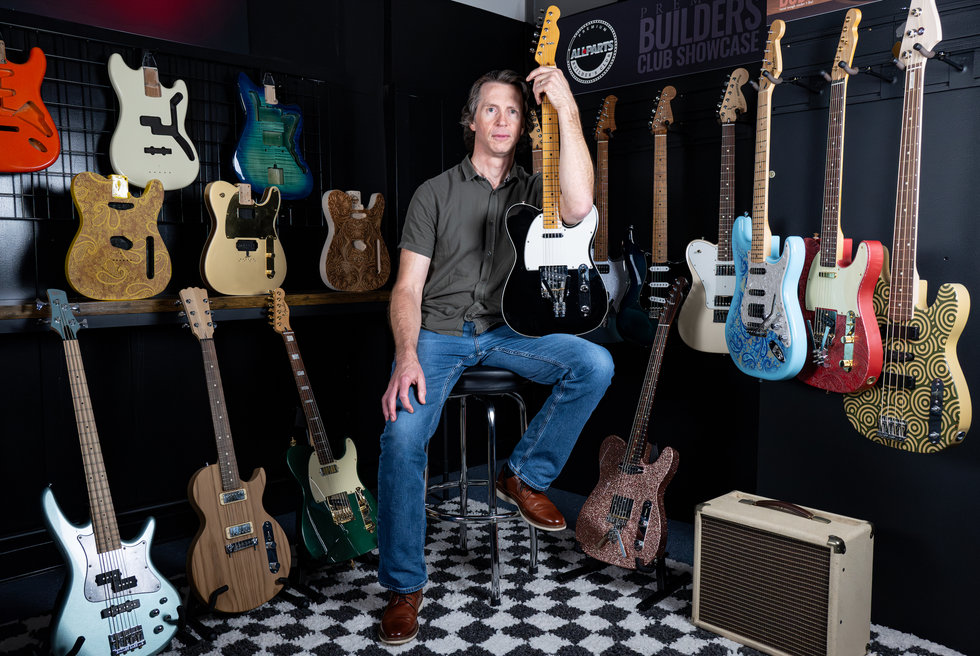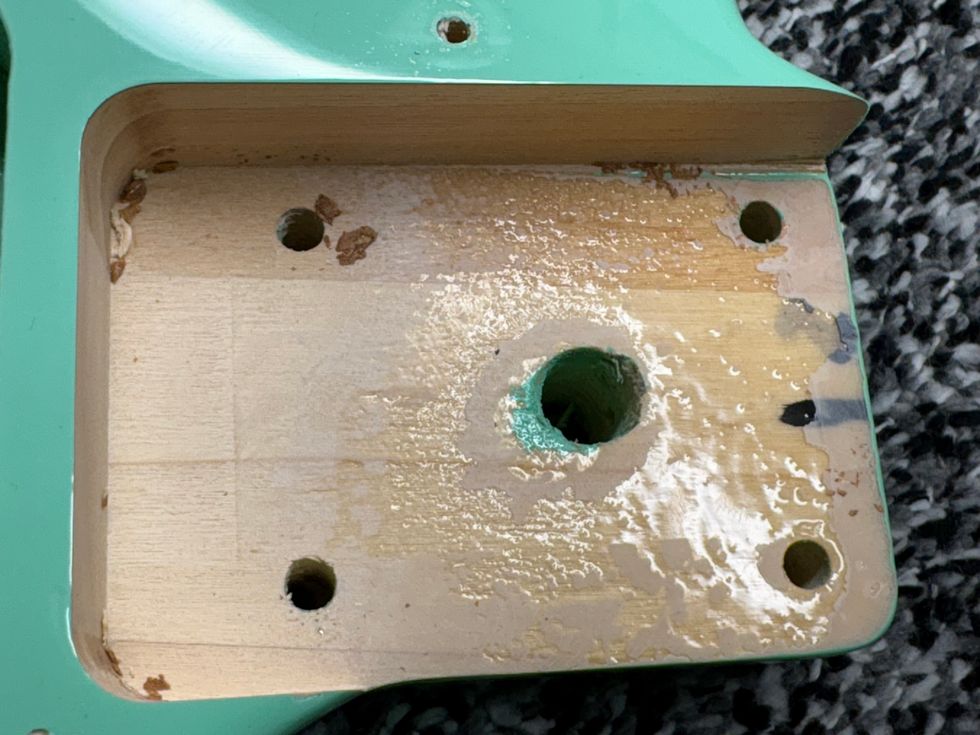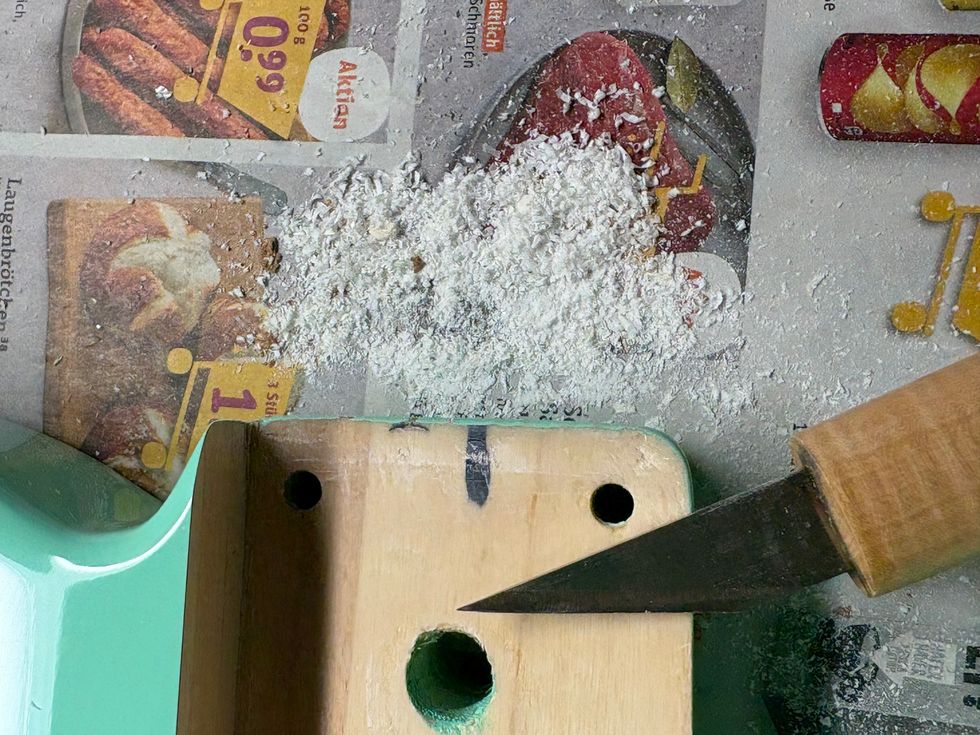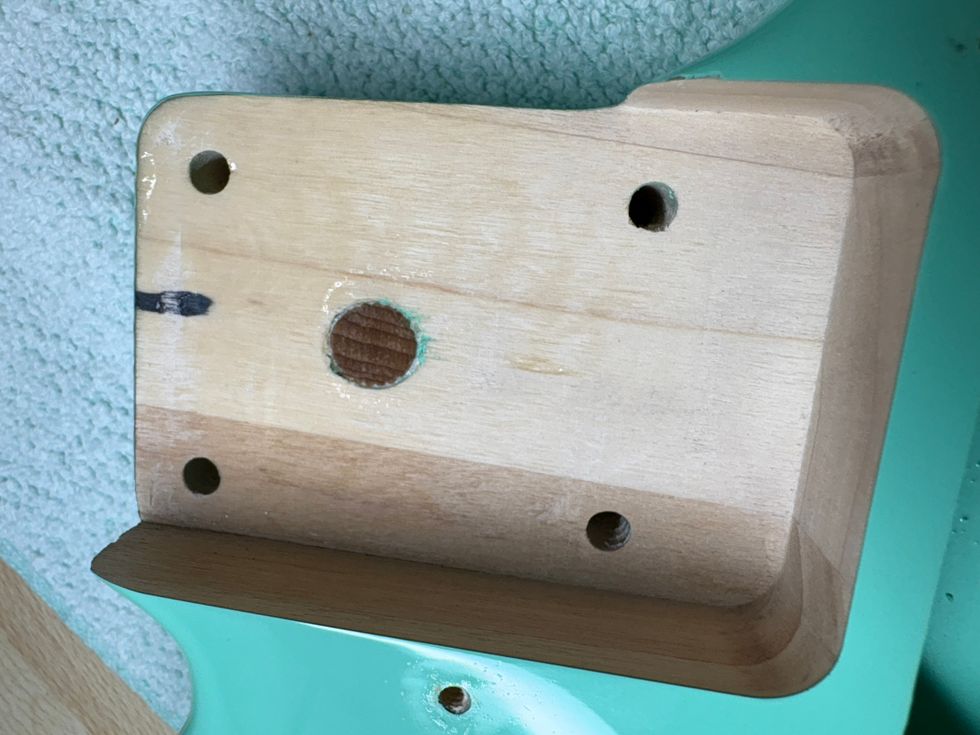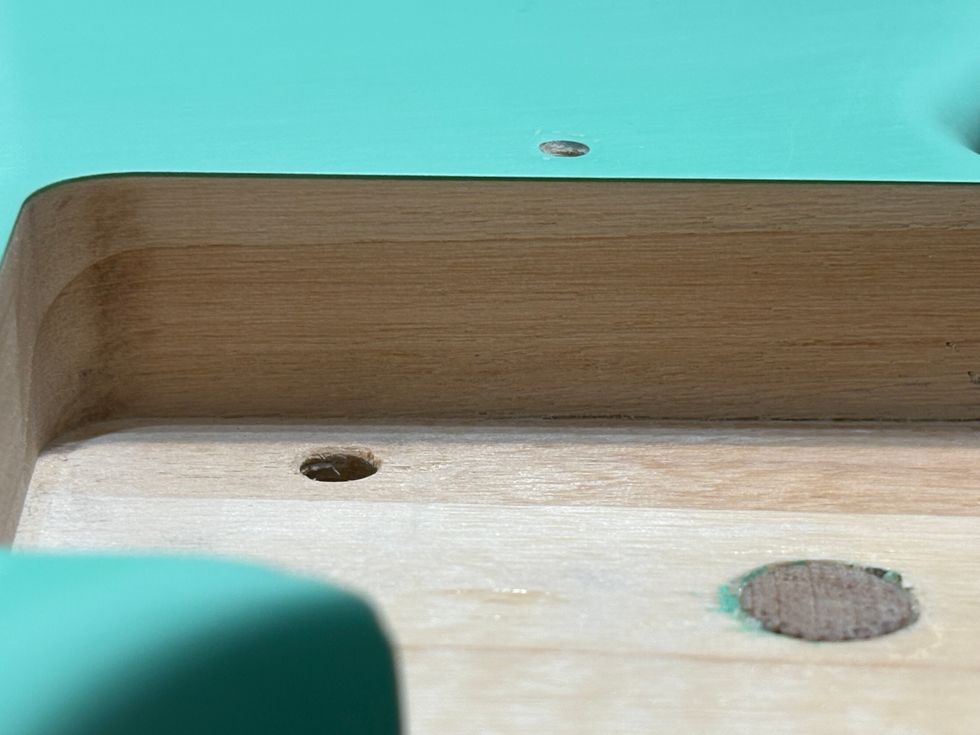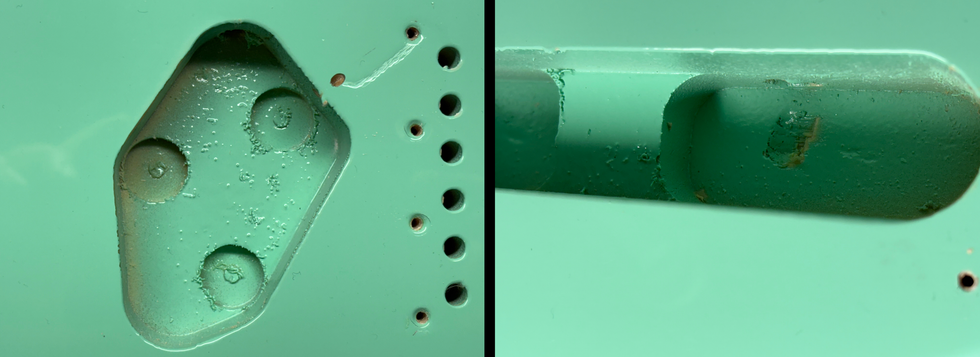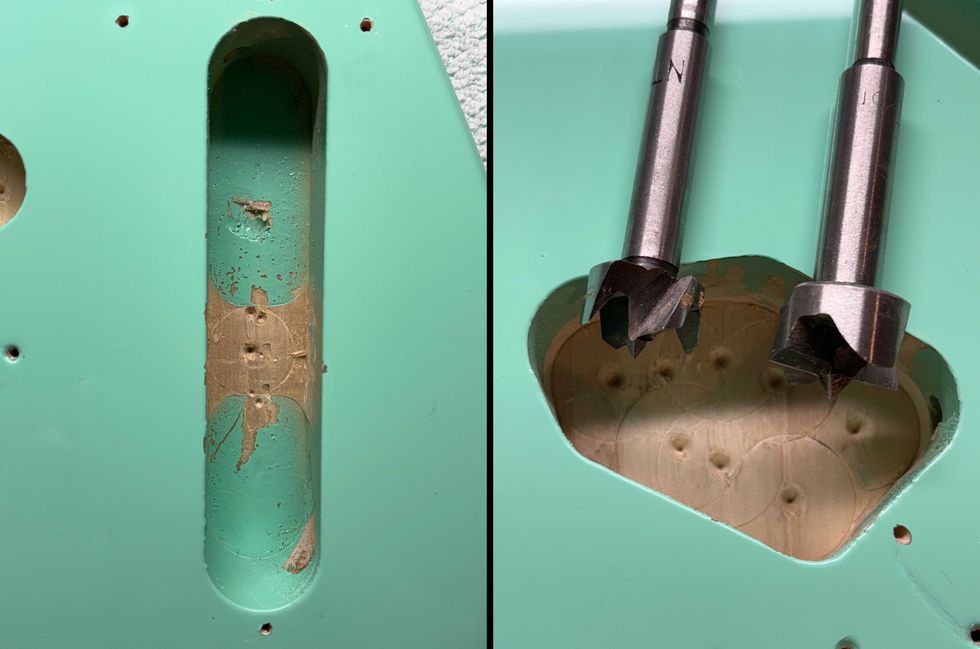  |
| Hi Amp Man, I have a 1993 Fender Blues Deluxe Reissue and I love the tone but want just a little more clean headroom – maybe 50-60 watts instead of the 40 watts that the amp is rated at. I was wondering if it is possible to change the output transformer on this amp to give me an extra 10 watts or so. - Michael Cad— |
Hi Michael,
Good question! The succinct answer is no, but there actually may be some benefit. Let me explain.
The output power of a tube amplifier is not totally determined by the output transformer, but also by the power, or mains, transformer, and the voltage and current it supplies to the output tubes. The job of the output transformer is to take the power developed by the output tubes and convert it to a form that is usable by the speaker. The problem with replacing just the output transformer with a larger one is that there is simply no more power available from the power transformer and tubes to convert to more output.
However, occasionally there is a perceived increase in output when a larger output transformer is installed in an amplifier. To substantiate this, I contacted my friends Paul and Sergio at Mercury Magnetics, manufacturers of some very cool iron. Here’s what they had to say:
“By starting with the right transformer, or upgrading an inferior transformer, a player can get more out of the amp and experience extended clean-tone headroom and a noticeable presence of a bigger soundstage effect. Increasing an output transformer’s frequency and tonal capacity with more of the right kind of iron and copper will result in more inductance to the primary winding. It’s this inductance that has a profound effect on tone and how large it sounds.”
In plain English, a larger and better quality output transformer will generally make an amp sound bigger, without actually having any additional output power. This is especially true with amplifiers that have output transformers designed to be just big enough to get the job done – a design theory that, I might add, is pretty foreign to us here at Budda. We believe in the concept of “bigger is better” and “size does matter” (haha).
The bottom line is you could have the output transformer in your Deluxe replaced with a larger capacity output transformer such as its big brother the Deville, or an even better upgrade transformer from Mercury, and hope that it achieves the results you desire. This modification, however, is not for the inexperienced as the PC board needs to be lifted and additional mounting holes drilled. Of course you could go all the way and have the mains transformer replaced with a Deville or upgraded transformer as well. This again is not for the inexperienced as the chassis cutout needs to be enlarged – but according to the original ’93-’94 schematics, the circuits are virtually identical, so you could have yourself a 60-watt amp in a 40-watt body, except for the 50-watt speaker.
Good luck, and have fun crusin’ with your new Deluxe Deville.
| I have a Marshall 100-watt Super Lead II with a Master Volume mod in one of the inputs. I’ve recently rediscovered my Tom Scholz Power Soak and absolutely love the tone. Years ago I hated it because I was using it incorrectly; only setting the master volume at 3 or 4 and using pedal distortion. Now I crank the master to 10 and it rocks. However, one day I plugged in and noticed high single-notes had a low undertone, like a harmony, but not in harmony. Regular chords sound scratchy, but without the Power Soak it doesn’t do this. All the solder joints and resistors in the Soak seem to be intact, and when I use an overdrive pedal with the master cranked, controlling the volume with the pedal, it doesn’t make the weird sounds. A friend plugged the Power Soak into a Peavey 100-watt amp and we didn’t hear the noise. My amp tech is at a loss as well. Any suggestions? - Kevin |
Hello Kevin,
Thanks for your question and your detailed explanation of the problem. I just have to take a guess at one extra detail here in order to make a diagnosis. When you’re playing the amp without the Power Soak, you don’t have the Master Volume on 10; it is instead set to some manageable volume. If that’s correct, then it sounds like you have a very cool old amp with a typical old amp problem – the power supply capacitors need to be replaced.
When the power supply caps begin to dry out, as they do in older amps, they can no longer properly filter the entire 60-cycle AC component out of the high voltage DC. When this happens, as the tubes reach their maximum output, or more properly the maximum amount of output allowed by the power supply, they begin to add this 60-cycle component to the audio signal. This produces the “low undertone, like a harmony, but not in harmony” effect – good explanation, Kevin. Have your technician replace the filter caps and your amp will no longer be singing those off-key harmonies.
Now you can play in a rock n’ roll band with peace of mind, feelin’ satisfied.
Jeff Bober
Co-Founder and Senior Design Engineer – Budda Amplification
jeffb@budda.com
www.budda.com
©2007 Jeff Bober




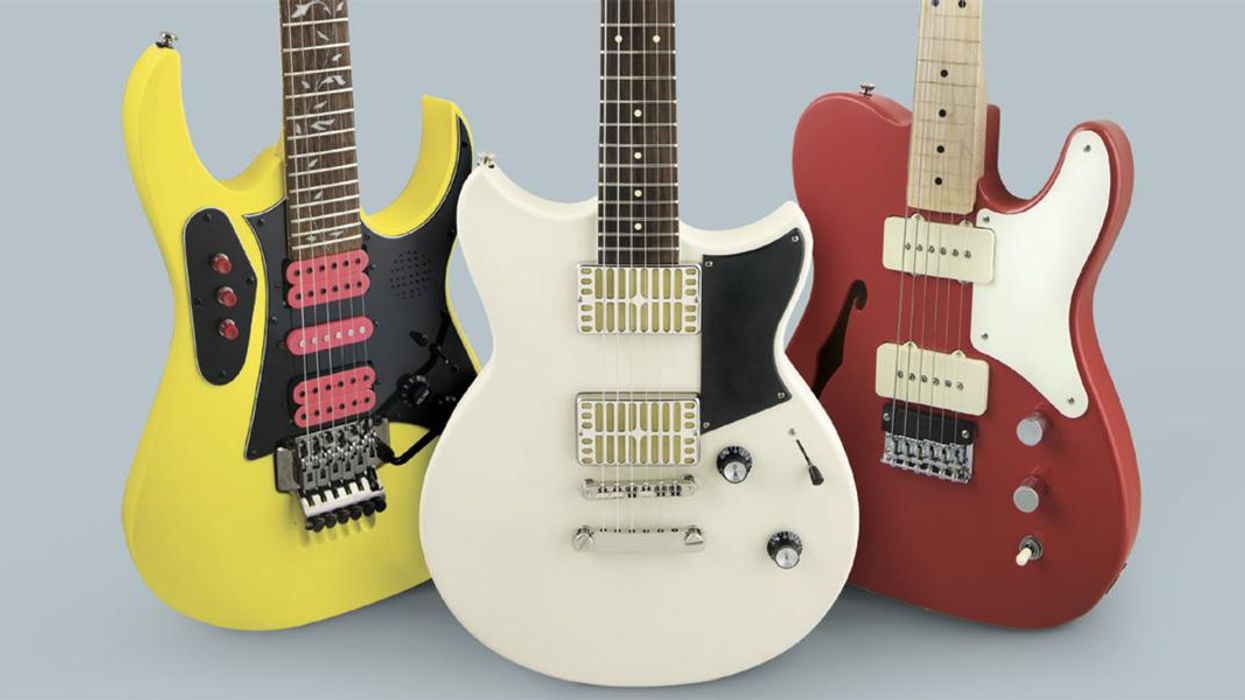
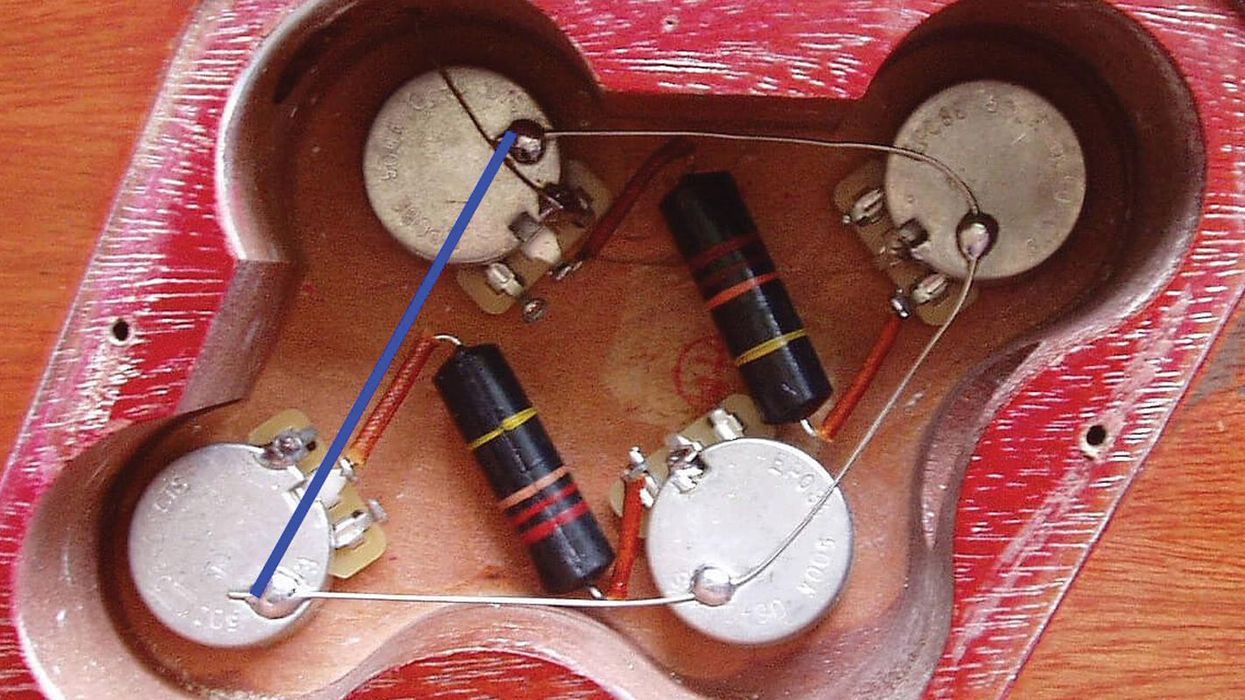
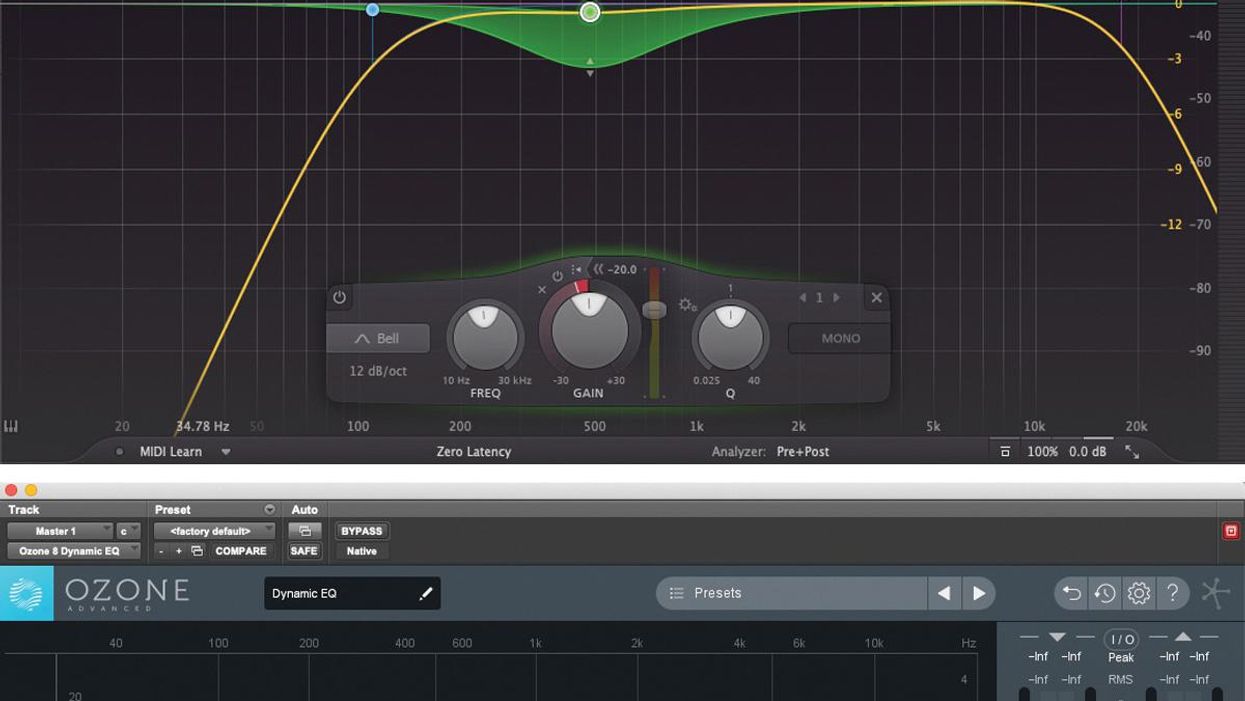













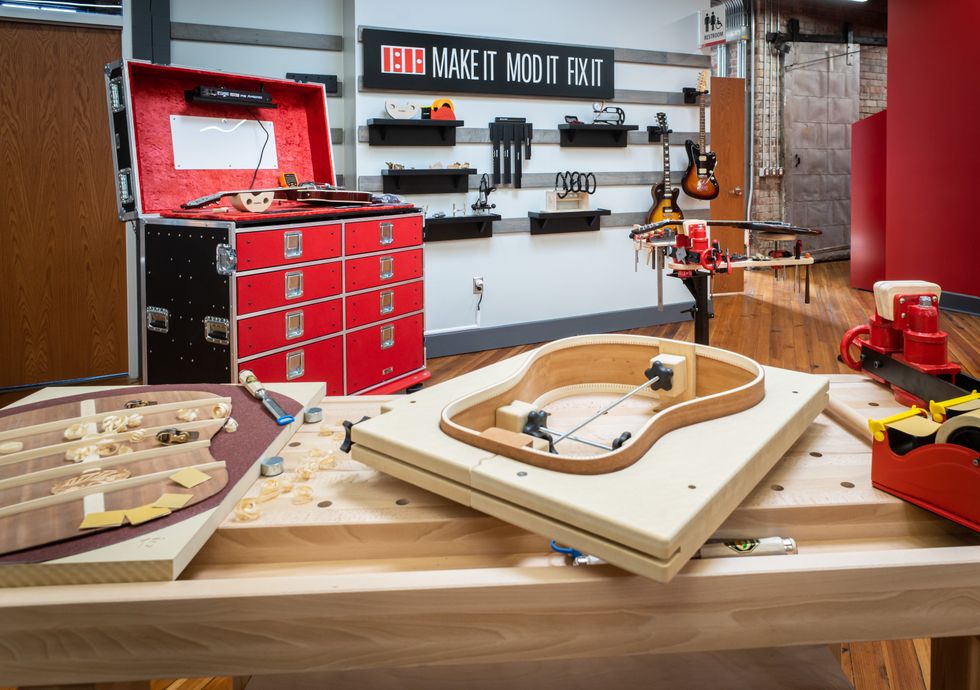

 The Allparts team at their Houston warehouse, with Dean Herman in the front row, second from right.Photo by Enrique Rodriguez
The Allparts team at their Houston warehouse, with Dean Herman in the front row, second from right.Photo by Enrique Rodriguez